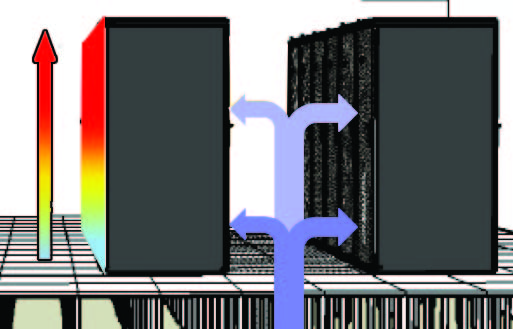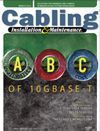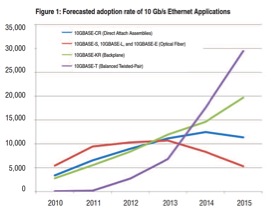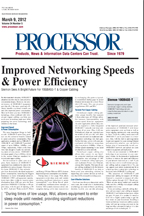10GBASE-T: The Future of 10Gb/s Ethernet [INFOGRAPHIC]
In this Infographic, we look at key points in the timeline of 10Gb/s copper cabling and the 10GBASE-T application standard. From early cabling options to current and future developments, it shows 10GBASE-T and twisted-pair copper cabling’s projected rise to 10Gb/s Ethernet dominance.
To learn more about 10Gb/s copper cabling, check out the whitepaper “State of the Network: 10GBASE-T Equipment Availability and the Future of Copper Media“.

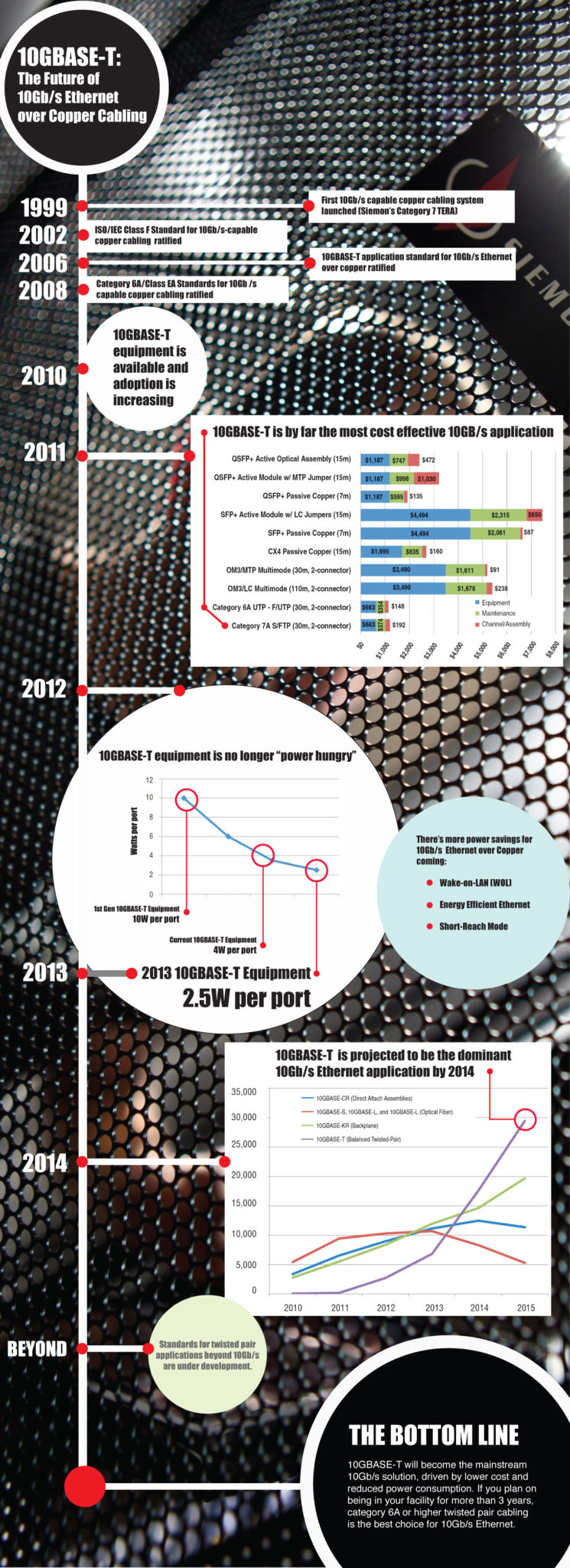
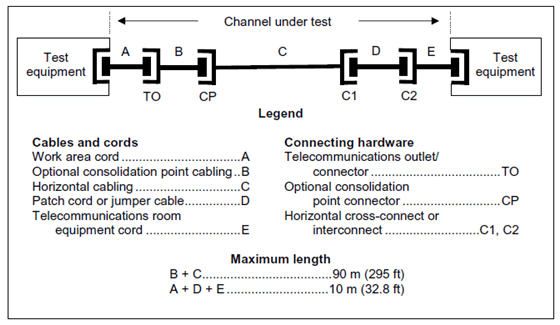 compliance cables and connectors provide significantly higher channel capacity than any other class or category of balanced cabling.
compliance cables and connectors provide significantly higher channel capacity than any other class or category of balanced cabling.